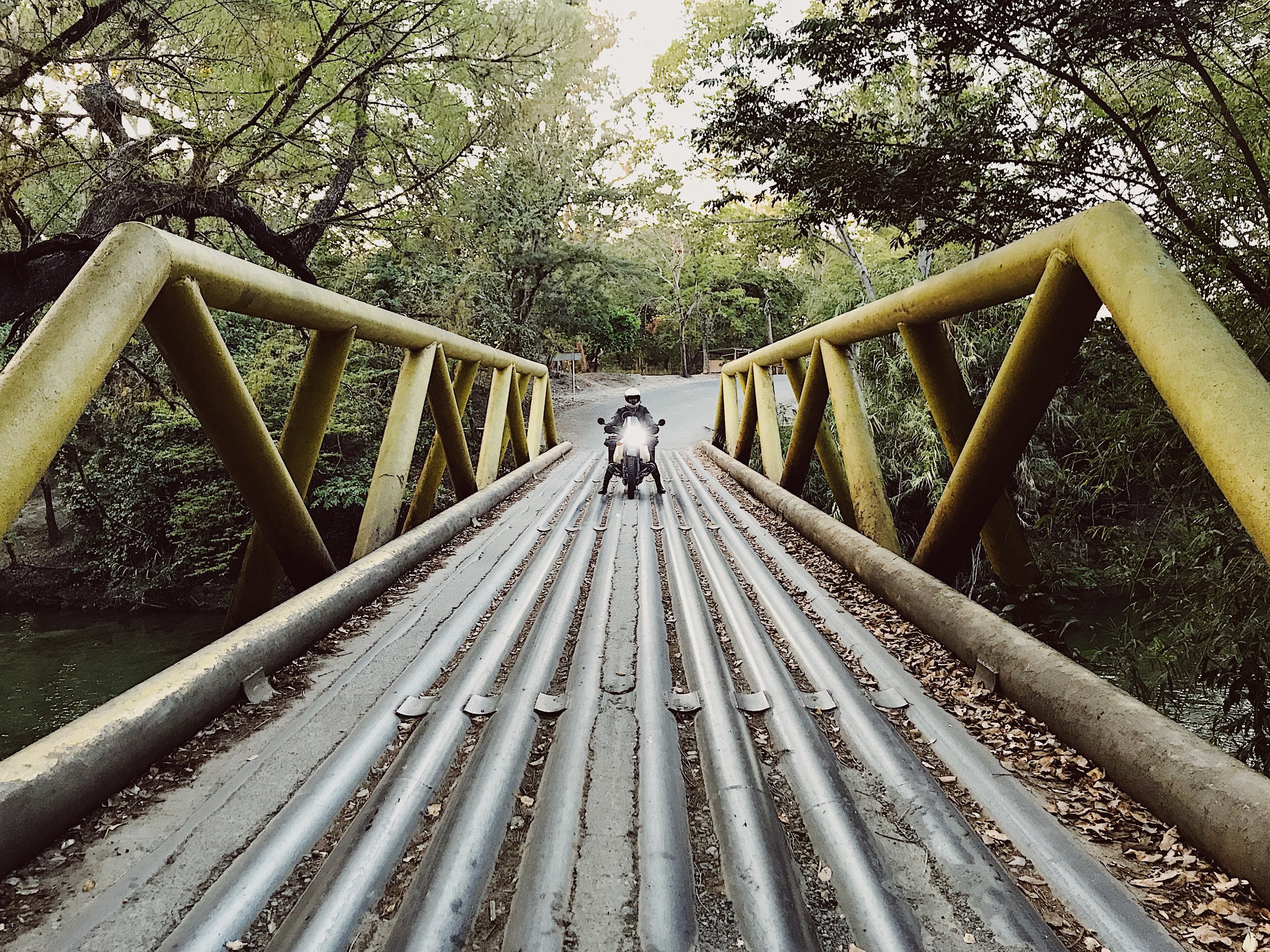We left Mexico last week and crossed into Guatemala via the Cuahtémoc, Mexico—Mesilla, Guatemala border. Certain experiences come to mind when I reflect on our three-and-a-half months in Mexico—the gothic and baroque fantasyland churches of San Miguel and Morelia and Coyoacán and Cholula at Christmas time, covered in tinsel and glaring poinsettias and felted drugstore stockings. The Sanctuario de Tontzíntla, where the wall space of the church’s interior, down to the last inch, swirled with stucco reliefs of peyote flowers, morning glories, maíz, saints, twisting columns of red and blue signifying the old gods of fire and water, and bunches of grapes for a mouth, a papaya for a nose, and two cacao seeds for eyes to represent the plumed serpent god Quetzalcoatl—all accumulated to glorify the divine feminine, the syncretic vision of the Catholic Virgin de Guadalupe and the indigenous Tonzín, the Sacred Mother. I think of the “heretical” indigenous rituals practiced at the church of San Juan de Chamula, a church no longer served by Catholic pastors where women in shaggy, black woolen skirts shuffled softly as rabbits across the tile floor, which was carpeted with fresh pine needles. I watched as a man in a polo-shirt and jeans ducked around families sitting on the floor in their own private circles, sweeping the needles away from lit, half-spent tapers and scraping up little pools of wax with an aluminum dust pan. They are all equal spectacles in my mind. So, where and how do I begin?
I see again the miles and miles of windmills flanking a stretch of highway from Oaxaca to its border with the state of Chiapas, the blades led by the rhythmic foreboding of the wind, which many Spanish speakers in the region simply call aire. The blasts of aire were so heavy that they appeared to congeal in the empty space around the bending and lashing of the trees to our left and right. I feared our tires would be shoved right out from under us; I observed within myself a creeping, primitive attribution of will to these whirling machines and an instinct to ask for safe passage from these colossal guardians and interpreters of the air.
I recall the field worker who passed silently between the tables of the Puebla Starbucks where I last sat blogging, who placed type-written scraps of paper on each table telling of the wind-strangled corn of his milpa, his ancestral plot of land, and of his need for our spare change.
I recall the fly-specked curtains of our cabaña in the tiny fishing village of Chipehua, Oaxaca dancing in the hot winds that poured through our open windows. The fine grit caught in that wind filtered indoors through gaps woven into the palapa roof and settled on the nightstand, the soap dish, and the bathroom sink. And sixty-three year-old Adrián, who cooked and served us breakfast the next morning at his family’s Hotel Las Palmas. How he smiled and chided us in his soft voice for staying at those half-forgotten cabañas and not at Las Palmas, which was only just down the road. No no no, he said, as we pointed out our little shack on the hill. His inn was new, the rooms tipo Americano, con clima. Con clima, he repeated. Air conditioning. Adrián was happy we had come to eat anyway, and after clearing our plates he sat down at our table. He counted off his US-born grandchildren on his blunt, dark fingers and chatted about the importance of taking care of one’s parents, about one of his daughters who didn't speak to him anymore, and about sewing the seeds and reaping the harvests of kinship—one’s cosecha, he called it, arranging and rearranging the bottles of condiments on the table for emphasis. He told us of the four years he spent living in Phoenix, Arizona, how he missed having access to name brands at bargain outlet prices, and of his plans for the expansion of the hotel. From our right drifted the sounds of someone’s pet tortoise scrabbling against the low wall of the adjacent sandy-floored patio, where Adrián planned to put in a pool. When we promised to come back for dinner, he proudly invited us to admire his kitchen, his wood-fire oven, and all the spotted and striped whole fish in his freezer.
I sit here now at the Hostel del Lago in San Marcos la Laguna, Guatemala, wrapped against the unusual winds in a shawl hand-woven by an indigenous woman named Imelda. I’ve spent my days here hiking up the volcano of San Pedro, floating in Lake Atitlán, and watching the snaking progress of a wildfire and the heavy shadow cast on the hill by its black plume of smoke. (The winds made progress against the fire difficult, but we were fortunate that it did not make its way into town.) Evening finds me sitting on the stoop of the hostel’s common area speaking with Imelda, in the Spanish which is second to my English, second to her Kaqchikel. She must be about the same age as my mother, perhaps a little younger. At times, I look at her and would guess that she’d been born a century before my grandparents; at other times, she promises to connect with me via her daughter’s Facebook account, and the themes of our conversation would be pertinent to any of the women I know back home. She calls her handiwork the work of abuelos, grandparents; she calls her delight and pride in weaving benediciones, blessings from God. At the same time, she laments, she doesn’t live in the world of her abuelos and must earn money just like everyone else. She describes the loneliness of living with the alcoholism of her family members as a punch in the stomach; she says that her mind turns and turns back on itself, miming the sinuous mountain roads with her delicate hands, on the question of where to go if she could leave and of what to do if she could do something else. But like everyone and everything else in Guatemala, seemingly, like the chicken buses and tuk tuks and pick-up trucks and pharmacies and convenience markets all claiming the protection of the Blood of Christ and Divine Providence, she believes that God sees and blesses her struggle.
I marvel at the way Imelda speaks to me—speaking not to her pre-conceived notion of an American tourist, not as a representative of the “Indigenous Struggle” which is so often the rhetoric used by the affluent, ex-pat industry of this village. I come to believe that she speaks to me as she does not so much because she has no one else, but because, sometimes, the right people are brought together at the right moment. Or so I believe—that my need for personal connection was as requisite to this moment as was my ability to listen, as was her need for personal connection, as was her willingness to trust and confide in me. Such a connection gives rise to the feeling of wholeness promised by so many of the new-age therapies available here in San Marcos, in which I find value and within which I endeavor to be part. But we retreated to no sun-warmed yoga platform above glinting waters to find it; we sat apart from the drum circle and the fire. Once, before we parted, she said that what she really wants is a thermos to carry hot water, or perhaps even coffee, as she hikes these sleeping volcanoes to gather herbs and firewood, and to keep her warm on these nights of so much aire, perched on stone steps with her spread of shawls. She hugs me before I go.
As I sit and consider the end of my time in Mexico and my introduction to Guatemala, all the little moments of the past three-and-a-half months roll over me and I could almost cry with the joy of reliving them—could almost cry with the peculiar loneliness that comes with not knowing quite how to share them. What I want to share often seems so much bigger than my own particular slant; behind my desire to relate experience in a way that feels authentic and immersive is the bare hope that someone else is listening. I think we all want to be heard. Rarely, though, do we know the peace of telling a worthy story without some grappling, without visions of pulling a dazzling fish out of the blind seas with only one’s hands.

